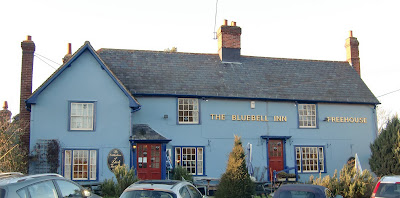The small nearby village of Hempstead, Essex, is noteworthy for two reasons. Firstly it is the final resting place of the famous Physician William Harvey and secondly it is the birthplace of the infamous Highwayman Dick Turpin.
The remains of William Harvey
Discoverer of the Circulation of the Blood
were reverentially placed in this Sarcophagus, by
The Royal College of Phsyicians of London
in the year 1883
William Harvey was an English physician who was the first to describe accurately how blood was pumped around the body by the heart.
Harvey was born in Folkestone, Kent on 1 April 1578. His father was a merchant. Harvey was educated at King's College, Canterbury and then at Cambridge University. He then studied medicine at the University of Padua in Italy, where the scientist and surgeon Hieronymus Fabricius tutored him.
William Harvey
Fabricius, who was fascinated by anatomy, recognised that the veins in the human body had one-way valves, but was puzzled as to their function. Harvey took the foundation of Fabricius's teaching, and went on to solve the riddle of what part the valves played in the circulation of blood through the body.
On his return from Italy in 1602, Harvey established himself as a physician. His career was helped by his marriage to Elizabeth Browne, daughter of Queen Elizabeth 1's physician, in 1604.
In 1607, he became a fellow of the Royal College of Physicians and, in 1609, was appointed physician to St Bartholomew's Hospital. In 1618, he became physician to Elizabeth's successor James I and to James' son Charles when he became king. Both James and Charles took a close interest in and encouraged Harvey's research.
Harvey's research was furthered through the dissection of animals. He first revealed his findings at the College of Physicians in 1616, and in 1628 he published his theories in a book entitled 'Exercitatio Anatomica de Motu Cordis et Sanguinis in Animalibus' ('An Anatomical Study of the Motion of the Heart and of the Blood in Animals'), where he explained how the heart propelled the blood in a circular course through the body. His discovery was received with great interest in England, although it was greeted with some scepticism on the Continent.
Around 1650, Eliab Harvey, brother of the famous Doctor William Harvey, excavated a crypt for the family coffins and built a chapel and schoolroom (now the vestry) over it.
Harvey was also the first to suggest that humans and other mammals reproduced via the fertilisation of an egg by sperm. It took a further two centuries before a mammalian egg was finally observed, but nonetheless Harvey's theory won credibility during his lifetime.
Harvey retained a close relationship with the royal family through the English Civil War and witnessed the Battle of Edgehill. Thanks to Charles I he was, for a short time, warden of Merton College, Oxford (1645 - 1646).
He died on 3 June 1657.
In 1933 the Harveian Society of London gave money for the rebuilding of the tower.
St. Andrews, Hempstead, Essex
The other interesting fact about the village of Hempstead, is that it is the birthplace of Britain's most infamous Highwayman 'Dick Turpin', who was born at the Bluebell Inn, Hempstead in 1705. He was later caught for horse theft and executed by being hanged in York.
Dick Turpin and his horse Black Bess
The Bluebell Inn










Dear poster: I am writing an article about Dr. Harvey and I plan to contribute it to a journal in China. While searching for background info about Dr. Harvey I came across your posting. I wonder if you would allow me to use one of the pictures in your posting (the sixth one, the one the sarcophagus) in my article. Please advise and thanks a lot. Siak
ReplyDelete